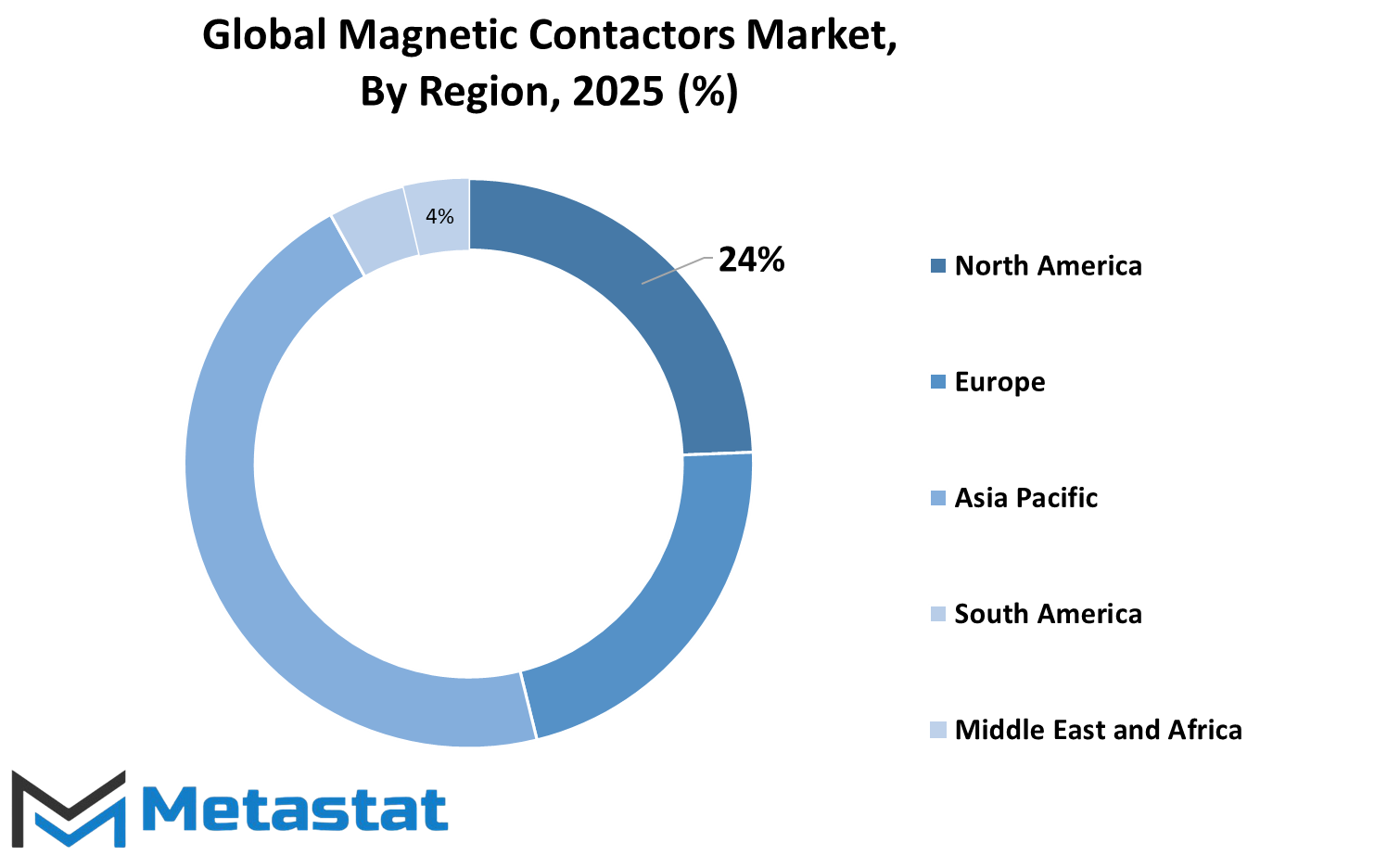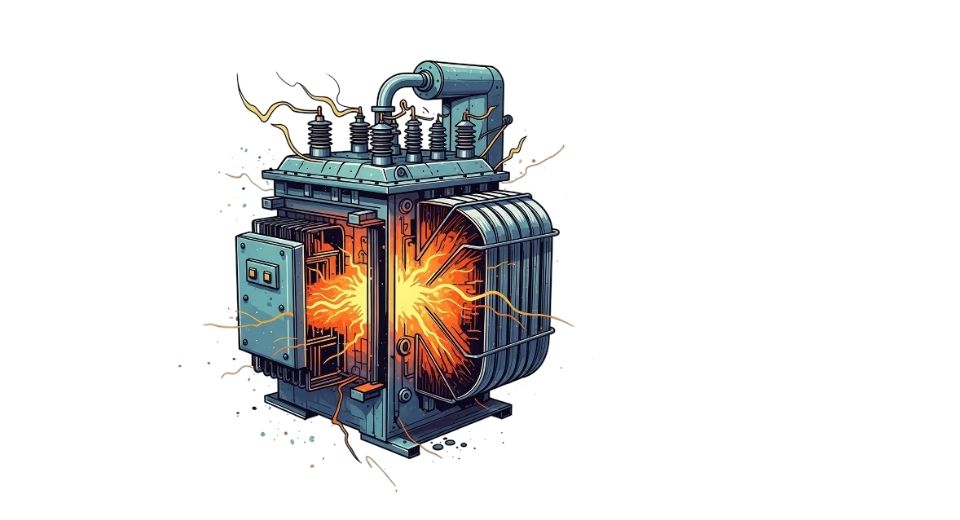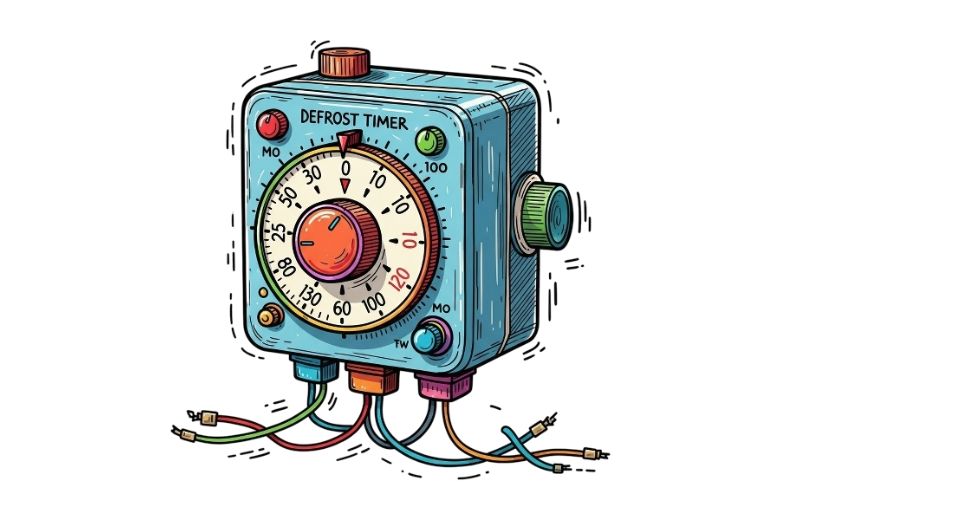MARKET OVERVIEW
The global magnetic contactors market will be dramatically changed with the ongoing transformation of technology and industry needs. The market, being the core of the electrical control and automation industry, will extend its applications beyond traditional usages, opening doors to new industries and emerging functionalities. In the coming years, the function of the magnetic contactor in modern electrical systems will be applied to new uses not historically associated with these devices, reflecting broader trends in smart infrastructure and energy management.
Magnetic contactors, commonly used to turn on/off electrical power circuits, will see their function integrated into more advanced systems that require higher control functions and increased energy efficiency. Their evolution into more electrified and automated environments will motivate manufacturers to produce contactors with better communication characteristics to provide seamless interfacing with digital control systems. This development will be instrumental in building smarter grids and industrial setups where real-time monitoring and remote control take precedence.
Expansion of renewable energy infrastructure and smart buildings will further redefine the use of magnetic contactors. They will not only be changing devices but also integral parts of systems controlling varying energy sources such as solar and wind energy. As energy distribution networks become decentralized, the global magnetic contactors market will need to address the demand for contactors that can operate dependably under varying load conditions to assist in the stability and efficiency of next-generation energy systems.
In addition to that, the transport electrification mainly charging infrastructure and electric vehicles will weigh significantly on the market size. Magnetic contactors will be installed in high-power charging stations, with the need for redesigning in terms of response time and lifespan. Their ability to handle high current levels safely will make them a very important device to enable charging networks that will blanket the globe to operate effectively.
Industrial automation and increased adoption of Industry 4.0 technologies also open another avenue of growth. Magnetic contactors will transition from simple on/off switching to becoming integral to smart factories, where they will be connected to sensors and control mechanisms. With this connection, predictive maintenance will become feasible, reducing downtime and maximizing operational efficiency. The global magnetic contactors market will adapt to address the requirement of contactors that can be integrated with IoT platforms and analytics to make more smart decision-making schemes in manufacturing environments.
Safety standards and norms will determine the market's future development as well. More advanced safety features and conformance to stringent international standards will be mandatory, pushing manufacturers to get creative with design and material technology. This focus will create magnetic contactors that not only perform optimally but also provide more effective protection from electrical faults and external influences.
Second, new telecommunications infrastructure and data center applications will broaden the scope of the market. As those markets grow, they will require reliable and effective electrical switching devices that can manage large volumes of power with minimal downtime. Magnetic contactors custom-built to meet the specific requirements of such high-demand settings will grow in usage.
The global magnetic contactors market will thus extend far beyond its accustomed borders. It will intersect with advancing technologies from other sectors, highlighting the new face of electrical power control. This development will encourage innovations tailored to new operating conditions that will open doors for businesses able to anticipate and meet the demands of future markets. The versatility and central function of magnetic contactors will ensure their continued relevance in helping form the infrastructure of the future.
Global magnetic contactors market is estimated to reach $4,781.6 Million by 2032; growing at a CAGR of 6.4% from 2025 to 2032.

GROWTH FACTORS
The global magnetic contactors market is rising at a steady rate, driven by changes in the demands of industry and growing emphasis on sustainability. The accelerated shift towards industrial automation is among the key drivers for such growth. As businesses are increasingly embracing Industry 4.0 and smart manufacturing models, greater demands for efficient and effective motor control solutions than ever have been witnessed. Magnetic contactors are an indispensable component in controlling electrical motors and, therefore, a key component of automation manufacturing systems. Their ability to perform reliably in harsh industrial settings has made them a manufacturer's first choice when replacing or renovating systems.
Increased demand for energy-saving technologies is another prevailing force propelling this industry. With sustainability having gone beyond the realm of a fad, companies are now looking to cut down on energy usage and improve efficiency overall. Magnetic contactors that help in conserving loss of power as well as supporting energy-saving capabilities are in demand. The shift towards greener technology is not limited to high-end economies; even developing economies are beginning to realize the benefit of using components that contribute towards long-term environmental goals.
Despite growing popularity, the market is not free of issues. The major issue is growing competition from solid-state relays. These are longer in life, low maintenance, and noise-free in operation, giving them an edge in certain applications. To companies where minimum maintenance and reliability are more important, the application of solid-state relays seems the preferable option and compresses the scope for traditional magnetic contactors to maintain their market share. Also, the high initial price of top-of-the-line magnetic contactors is still a barrier. In industries where budget is the limiting factor, especially in smaller businesses or developing nations, these costs may deter their mass application.
There are also many prospects on the horizon, though. One of those is the creation of magnetic contactors into smart grids. As the electrical system develops, contactors that can function optimally in intelligent grid systems will face increasing demand. Intelligent grid systems are set up to optimize energy distribution and consumption, and they require components that are fast to respond and efficient. Renewable energy is the second sector with increasing demand. Worldwide initiatives to shift towards sun and wind power schemes are calling for durable and reliable electrical devices. Magnetic contactors, which have a proven track record of performance under high loads, are perfectly poised to serve this growing industry.
MARKET SEGMENTATION
By Type
The global magnetic contactors market is growing steadily, mainly driven by industrial automation and rising demand for electricity. Contactors are power circuit control electric switches and are essential in applications that require repeated switching, such as motors, heat equipment, and lighting installations. Contactors help regulate electric currents safely and are a dependable element in manufacturing, energy, and construction industries. With advancing technology, the need for reliable and effective control systems grows, thus driving the need for magnetic contactors.
Type is also divided into AC Contactors valued at $2,437.4 million, and DC Contactors. AC Contactors are the most widely used type and cover the largest market share. They find application majorly in motor control and HVAC systems due to their reliability and maintenance ease. One of the main reasons why they are utilized more in heavy-duty usage is that they are able to handle high currents without being damaged. DC Contactors, while less common, are being used more in electric vehicles, solar panels, and battery life control. The shift towards clean energy and electric vehicles is giving a new fillip to the demand for DC Contactors.
Asia-Pacific contributes most in this region due to rapid industrialization in China, India, and Japan. They are investing heavily in infrastructure and power, thereby increasing demand for stable electrical components. North America and Europe also contribute substantial amounts, largely due to well-developed industries and a strong emphasis on workplace safety and power efficiency. Regulations and policies in most regions also have a tendency to encourage the use of high-quality contactors that meet safety and performance standards.
The market also benefits from increasing awareness in terms of saving energy. Magnetic contactors are generally used with smart systems for monitoring and reducing the use of electricity, thus helping companies and homeowners save on electricity bills. With increasing numbers of companies opting for automation, they look for components that are simple to install, long-lasting, and safe to handle all these magnetic contactors offer.
Though the market does see some challenges, including price wars and a constant pressure to innovate, overall things are good. New technologies and steady improvement in manufacturing systems continue to bring new opportunities. With increasing investment in energy and automation, the magnetic contactor market is likely to stay on a positive growth track.
By Industry
The global magnetic contactors market is anticipated to increase slowly because of increased demand from maximum industries. The product is an essential detail in controlling electric vehicles and different equipment and as a consequence has a substantial use in industrial methods. With growing industries automating and increasing their systems, there may be increased call for powerful and long-lasting contactors. Magnetic contactors assist ensure safe preventing and beginning of machines and safety towards overloads and voltage drops. Their use enables easy operations, reduces downtime, and will increase standard protection inside the place of work.
By industry, the market is classified into Oil and Gas, Energy and Utilities, Manufacturing, Transportation, and Others. In oil and gasoline applications, magnetic contactors are used in drilling, pump systems, and refineries in which motor control needs to be dependable. The conditions are typically tough, and the equipment used has to be tough as well as reliable. The energy and utilities sector is a second prominent application with the push for smarter power grids and renewable installations. As electricity networks continue to grow, contactors assist in the control of the increasing electrical systems, facilitating stable and efficient operation.
Industries manufacture one of the largest segments where magnetic contactors are employed. From assembly lines to packaging units, these control machines that operate around the clock. Any malfunction in motor control can cause delays, which are expensive, so companies operating in this sector like to use high-quality contactors that provide both reliability and easy maintenance. The transportation industry, which includes rail and electric vehicles, also depends on such devices to control power systems. Contactors are essential in maintaining the operation of vehicles efficiently and safely, especially in systems with high switching frequencies.
Aside from these, other sectors like construction, agriculture, and commercial buildings also contribute to the growth of the market. In all of these uses, the move towards automation and the need for energy-saving solutions are driving magnetic contactors towards general application. With industries growing and employing more advanced technologies, the need for efficient electrical control systems will continue to increase. Companies are focusing on developing contactors that are not only durable but also compact and power-saving. This shift in focus will help address the dynamic needs of different industries and provide for sustainable growth of the market.
By Application
The global magnetic contactors market is growing internationally with mounting demand across various industries. Electrically controlled switches have a primary role to trigger or turn off motors, switch circuits, and control electrical loads without any human intervention. As there is mounting practice of automation in various industries, magnetic contactors are finding more use than ever.
By application, the market further divides into Industrial Automation, Building Automation, HVAC Systems, Power Distribution, and Others. In industrial automation, magnetic contactors are essential in operating machinery and equipment. They help in regulating heavy electric loads and facilitate uninterrupted operation of automated systems. Industries depend on them for efficiency, safety, and reliable performance. With more and more companies switching towards automated systems, the demand for contactors in the category will continue to increase.
In home automation, building automation in commercial buildings, and office automation, such devices help control electrical systems in homes, offices, and commercial buildings. They are used in lighting systems, elevators, and security systems to conserve energy and improve convenience. With increasingly trending smart building solutions, there is also growing demand for reliable contactors. Magnetic contactors ensure systems run without failure and improve energy control.
HVAC systems, which control heating, ventilation, and air conditioning, also rely on magnetic contactors. These kinds of systems require devices that are capable of providing heavy switching as well as electrical loads. Contactors help in controlling compressors, fans, and pumps. Their ability to handle constant loads is one big reason why they are a favorite among residential as well as commercial HVAC applications.
In power distribution, magnetic contactors play a crucial role in controlling electrical flow through grids and systems. They are used to isolate circuits, avoid overloads, and ensure power network stability. With more investments by countries in infrastructure upgrade and renewable energy, the demand for the application of contactors in power distribution will grow gradually.
The "Others" segment would be comprised of small or specialty applications where magnetic contactors are nonetheless needed. Those would include agricultural machinery, marine equipment, or certain medical devices. Though not as massive as the main segments, they do contribute towards overall market growth.
With the growing need for automation, safety, and energy efficiency in every industry, the use of magnetic contactors will remain important. In factories, homes, or even big grid energy systems, these devices operate behind the scenes to make systems work and run safely.
By Voltage
The global Magnetic Contactors Market is divided according to voltage into two general categories: low voltage and medium voltage. These two categories identify the applications for which a given magnetic contactor would be appropriate, in terms of the voltage needs of different electrical systems. Low voltage magnetic contactors are used in dwelling, commercial, and light industrial settings. They can control equipment that operates at lower voltages, typically below 1,000 volts. Low voltage contactors are typically used in packages including lighting, motor starting, and heating, air flow, and aircon systems. Based on their high diploma of usage and comparatively low price, low voltage contactors cover maximum of the market.
Medium voltage magnetic contactors are applied in harsher environments. Some examples consist of industries like mining, production, and electricity sectors, wherein electrical systems require greater electricity levels. Medium voltage contactors perform above voltages of 1,000 volts, once in a while reaching several thousand volts. They are vital for appropriately switching and controlling large vehicles and gadget that can't be supported by way of low voltage structures. Due to their extra state-of-the-art layout and higher protection requirements, medium voltage contactors are extra pricey and utilized in greater specialized, excessive-power packages.
The demand for magnetic contactors in each categories is being pushed through the growth of automation and industrial operations in a number of different markets. With increasingly more systems automated and electrical control-based, demand is growing for solid switching devices like magnetic contactors. In developing countries, rising infrastructure activities and urbanization are also propelling growth in the low voltage segment. While increased focus on efficiency and safety in large-scale operations is also propelling growth in the medium voltage segment.
Players are responding to these trends through increasing product durability, efficiency, and ease of installation. Smart contactors that can be monitored remotely is another trend affecting the market, offering users more control and maintenance. Overall, segmentation of the worldwide magnetic contactors market by voltage allows the specific requirements of an extensive group of users ranging from small companies to heavy industries to be addressed. With greater use of electric devices, the market is expected to have a steady path of growth and increase in both the voltage segments.
|
Forecast Period |
2025-2032 |
|
Market Size in 2025 |
$3,103.9 million |
|
Market Size by 2032 |
$4,781.6 Million |
|
Growth Rate from 2025 to 2032 |
6.4% |
|
Base Year |
2024 |
|
Regions Covered |
North America, Europe, Asia-Pacific, South America, Middle East & Africa |
REGIONAL ANALYSIS
The global magnetic contactors market is divided geographically into different regions, which are North America, Europe, Asia-Pacific, South America, and Middle East & Africa. All these regions are again segregated into sub-regions to closely estimate the market activity. In North America, the market is segmented into the United States, Canada, and Mexico. These countries are the largest contributors to regional industrialization, especially in sectors where electrical control systems and automation are common. In Europe, the market includes the UK, Germany, France, Italy, and the Rest of Europe. These countries are famous for their strong manufacturing bases, and so is the demand for magnetic contactors in applications varying from HVAC equipment to motors and other electrical equipment.
Asia-Pacific has the highest share in this market and includes India, China, Japan, South Korea, and Rest of Asia-Pacific. The region is undergoing rapid industrialization, particularly in China and India, where industries and infrastructural development continue to grow. With the growth of industries comes the demand for efficient and secure electrical systems, which in turn drives the use of magnetic contactors. Japan and South Korea also consistently contribute, thanks to their established electronics and automotive industries.
In South America, Brazil, Argentina, and Rest of South America form the market. Although the region is smaller, demand is still being created by industries within these regions that are modernizing and integrating new technologies. Brazil is the dominant player here, led by its growing construction and energy sectors.
Middle East & Africa includes GCC Countries, Egypt, South Africa, and Rest of Middle East & Africa. They are growing at a sluggish but steady rate, typically backed by infrastructure and energy investments. The key contributors are GCC Countries and South Africa, which are continuously investing in applications that need reliable electrical products, like magnetic contactors.
Overall, the Magnetic Contactors market is influenced by the pace of industrial and infrastructural growth in different geographic regions. Each region possesses some level of demand based on regional economic growth, investment in automation, and technological developments. This geographic segmentation allows companies to understand where the highest potential is and where extra focus might be needed for further growth.

COMPETITIVE PLAYERS
The global magnetic contactors market is experiencing steady growth owing to increasing demand from sectors such as manufacturing, energy, and construction. Magnetic contactors are used extensively for the switching of electric motors and the powering of power circuits. They are pivotal to systems in which electric motors must start up and shut down repeatedly and are therefore an important component of automation and electrical protection. Industries are concentrating increasingly on safety and efficiency, driving the demand for trustworthy components such as magnetic contactors. As industries expand and develop, the demand for sophisticated electrical control systems is going to rise ever further.
Some firms are a step ahead in this sector in providing long-lasting and efficient magnetic contactors. Leading industry players in the magnetic contactors market are Siemens AG, Schneider Electric, ABB Ltd., Mitsubishi Electric Corporation, Rockwell Automation, Eaton Corporation, General Electric Company, Hubbell Industrial Controls, Inc., Toshiba Corporation, and Fuji Electric Co., Ltd. These players have a strong global presence and emphasize product innovation. They continue to invest in research and development in an effort to enhance the performance and longevity of their products, thereby making them attractive to numerous industries. Their international networks of distribution and after-sale services further consolidate their place in the market.
There is increasing concern regarding energy usage and the effects on the environment as well. Industries and governments alike are increasingly concerned with embracing energy-saving solutions. Magnetic contactors assist in conserving power and minimizing wastage, which is the reason why they find a place in energy-saving systems. Where automation is gaining prominence, like in the case of intelligent buildings and plants, the demand for magnetic contactors of superior quality will continue to surge.
Another driver behind the growth of the market is the growing application of electric equipment in residential and industrial buildings. As urbanization increases and infrastructure develops, there is greater need for efficient and safe electrical systems. This has a direct reflection on the growth of the magnetic contactors market. Firms within the industry are also concentrating on the provision of tailored solutions to suit individual customer requirements, which contributes to their competitive advantage.
Magnetic Contactors Market Key Segments:
By Type
- AC Contactors
- DC Contactors
By Industry
- Oil and Gas
- Energy and Utilities
- Manufacturing
- Transportation
- Others
By Application
- Industrial Automation
- Building Automation
- HVAC Systems
- Power Distribution
- Others
By Voltage
- Low Voltage
- Medium Voltage
Key Global Magnetic Contactors Industry Players
- Siemens AG
- Schneider Electric
- ABB Ltd.
- Mitsubishi Electric Corporation
- Rockwell Automation
- Eaton Corporation
- General Electric Company
- Hubbell Industrial Controls, Inc.
- Toshiba Corporation
- Fuji Electric Co., Ltd.
WHAT REPORT PROVIDES
- Full in-depth analysis of the parent Industry
- Important changes in market and its dynamics
- Segmentation details of the market
- Former, on-going, and projected market analysis in terms of volume and value
- Assessment of niche industry developments
- Market share analysis
- Key strategies of major players
- Emerging segments and regional growth potential








 US: +1 3023308252
US: +1 3023308252






